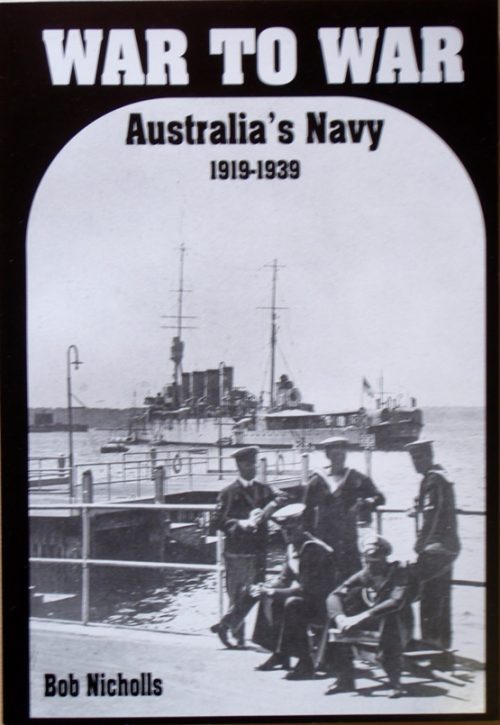Description
Title: War to War – Australia’s Navy 1919 – 1939
Author:
Condition: Near Mint
Edition: 1st Edition
Publication Date: 2012
ISBN: 978980777451
Cover: Soft Cover without Dust Jacket – 238 pages
Comments: This is an account of the Royal Australian Navy and it’s development during the interwar years from 1919 to 1939.
By late 1919, the RAN’s strength had peaked at a battlecruiser, four cruisers, six submarines, twelve destroyers, four sloops, plus auxiliaries.
However, despite the clear deterrent value that the RAN had provided against an enemy raiding threat during World War I, the Navy struggled for the next two decades to maintain a credible force, as the will to invest in an effective and independent navy declined.
The national feeling that the creation of a powerful navy had heralded Australia’s coming of age had been displaced by the growing ANZAC mythology, whereby the nation’s independence had been bought with blood on the shores of Gallipoli.
The service of 5,000 RAN personnel paled against the 421,809 men of the AIF and its 215,585 casualties. The national psyche and sense of nationhood shifted firmly from a naval to an army focus.
The Great Depression saw the defence budget slashed by 21 percent in 1930/31 and another 17 percent in 1931/32. By 1932 the RAN could muster only three ships in full commission, one in partial commission, and two in reserve. Personnel numbers were cut to under 3,000 and wages slashed by up to 25 percent to save money.
The RAN also faced attack from the Army and RAAF, as each fought to retain its share of the depleted defence budget. The RAAF in particular argued that air power alone could protect Australia’s local sea lines of communication and prevent invasion.
While the air power argument was not fully accepted, successive governments seriously considered dispensing with the RAN and either distributing the task of naval defence to the Army and RAAF or returning it to the Royal Navy. Naval funding allocations suffered accordingly.
Doctrinally, the Royal Navy’s focus on trade protection had shifted from that of the pre-war period. To fulfil the trade protection mission along the vast sea-lanes of the Empire it was thought that many small cruisers were better than a few battlecruisers.
Wishing to achieve parity with the Royal Navy and restrict the Imperial Japanese Navy, without incurring the cost of a naval arms race, in 1921 the US president called a conference between the USA, Britain, Japan, France and Italy to advocate mutual naval arms limitation. Faced with massive post-war debts all parties agreed.
The immediate result of the 1922 Washington Five Power Naval Treaty was that Britain, America and Japan scrapped a number of capital ships. Among the British tally, with the full concurrence of the Australian government, was the battlecruiser Australia. Henceforth Australian naval deterrence would rely on cruisers for local and Imperial trade protection.
As the depression eased, and faced by Japan and Germany building powerful navies, the Australian Government looked again to the neglected RAN. To provide a more useful trade protection force, the Government placed successive orders for nine new ships.
Nonetheless, expenditure on the RAN continued to decline as a proportion of overall defence spending, reaching just 26 percent in 1939. When war was declared on 3 September 1939 the RAN had just two heavy cruisers, three new and one old light cruisers, five World War I vintage destroyers and two sloops.




